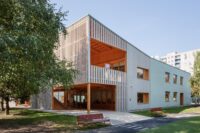- Home
- Articles
- Architectural Portfolio
- Architectral Presentation
- Inspirational Stories
- Architecture News
- Visualization
- BIM Industry
- Facade Design
- Parametric Design
- Career
- Landscape Architecture
- Construction
- Artificial Intelligence
- Sketching
- Design Softwares
- Diagrams
- Writing
- Architectural Tips
- Sustainability
- Courses
- Concept
- Technology
- History & Heritage
- Future of Architecture
- Guides & How-To
- Art & Culture
- Projects
- Interior Design
- Competitions
- Jobs
- Store
- Tools
- More
- Home
- Articles
- Architectural Portfolio
- Architectral Presentation
- Inspirational Stories
- Architecture News
- Visualization
- BIM Industry
- Facade Design
- Parametric Design
- Career
- Landscape Architecture
- Construction
- Artificial Intelligence
- Sketching
- Design Softwares
- Diagrams
- Writing
- Architectural Tips
- Sustainability
- Courses
- Concept
- Technology
- History & Heritage
- Future of Architecture
- Guides & How-To
- Art & Culture
- Projects
- Interior Design
- Competitions
- Jobs
- Store
- Tools
- More
Top Tips for Saving Money While Studying Architecture: A Guide for Students
Discover essential tips for saving money while studying architecture. Learn how to manage tuition, fees, and supplies costs with effective budgeting strategies, prioritize expenses, and utilize student discounts. Find out ways to minimize daily expenses, choose affordable housing, and harness university resources.

Studying architecture can be incredibly rewarding, but let’s face it—it’s also expensive. Between software licenses, model materials, and endless coffee runs, costs can quickly add up. As students, we need to be savvy about our spending to ensure we’re not buried in debt by graduation.
Fortunately, there are plenty of ways to save money without sacrificing the quality of our education or creative projects. From leveraging student discounts to finding cost-effective materials, we’ll explore practical tips that can help us manage our finances better while navigating the demands of architecture school.

Table of Contents
ToggleUnderstanding the Financial Challenges of Studying Architecture
Financial challenges are significant for architecture students due to the diverse expenses involved. Effective management of these costs is crucial to prevent substantial debt.
Tuition and Fees
Tuition for architecture programs is often high, varying by institution. In-state public colleges can cost around $10,000 annually, while private schools may charge $30,000 or more. Additional fees for labs and studio courses add to these expenses. Scholarships and grants from professional organizations help reduce this burden.
Material and Equipment Expenses
Architecture students need specialized materials and equipment. Software like AutoCAD can cost several hundred dollars. High-quality drafting supplies, printers, and model materials like foam boards are essential. Renting or purchasing used equipment can offer savings. Online marketplaces and student buy-sell groups are valuable resources for finding affordable supplies.
Effective Budgeting Strategies for Architecture Students
Managing finances during architecture school requires strategic planning. These tips can help optimize spending without sacrificing educational quality.
Creating a Monthly Budget
Set up a consistent budgeting system to track all income and expenses. Begin by listing monthly income sources, such as student loans, part-time job earnings, and any scholarships or grants. Next, record fixed expenses like rent, utilities, and internet. Don’t forget variable costs such as groceries, transportation, and supplies.
Prioritize essential costs before allocating funds to discretionary items. Use budgeting apps like Mint and YNAB to simplify tracking. Revisiting and adjusting the budget monthly ensures it remains accurate and aligns with any financial changes.
Utilizing Student Discounts
Leverage the numerous student discounts available to reduce costs. Many software companies offer student versions or discounts for essential tools like AutoCAD, Revit, and Adobe Creative Cloud. Purchase drafting supplies and textbooks from stores offering student deals, or check if your school bookstore provides discounts.
Look for student discounts at local businesses including restaurants, public transport, and even museum admissions which can enrich architectural understanding. Always carry your student ID and inquire about discounts wherever you spend.
Every saving, no matter how small, contributes to better financial management during your studies.

Tips for Minimizing Daily Expenses
Managing daily expenses is crucial for architecture students. We can significantly reduce costs by making informed choices in our daily lives.
Choosing Affordable Housing Options
Selecting budget-friendly housing options is vital for reducing expenditures. Dormitories or shared apartments usually cost less than renting a private apartment. Opting for off-campus housing can be cheaper than on-campus accommodation if utilities and transportation costs are considered.
Saving on Transportation
Efficiently managing transportation can save money. Using public transport instead of owning a car can cut down on expenses for gas, maintenance, and parking fees. Many cities offer student discounts on metro cards and bus passes. Biking or walking for short distances not only saves money but also promotes a healthier lifestyle.
Scholarship and Financial Aid Opportunities
Students studying architecture often face high costs. However, exploring scholarship and financial aid opportunities can significantly ease this burden.
Applying for Architecture-Specific Scholarships
Architecture-specific scholarships provide financial support tailored to architecture students’ needs. Organizations like the AIA (American Institute of Architects) offer scholarships to promising architecture students. Searching for scholarships provided by architecture firms can also yield opportunities. Universities typically list architecture scholarships on their financial aid pages. Applying early, preparing strong portfolios, and writing compelling essays increase chances of success.
Navigating Federal and State Financial Aid
Federal and state financial aid programs assist students in managing educational costs. Filling out the FAFSA (Free Application for Federal Student Aid) unlocks access to federal grants, loans, and work-study options. Many states also offer grants and scholarships exclusively for residents. Checking state education department websites helps identify available programs. Combining federal and state aid can significantly reduce out-of-pocket expenses.

Additional Cost-Saving Measures
Exploring additional cost-saving measures can help architecture students better manage their finances. Here are some practical tips.
Buying Second-Hand Materials and Textbooks
Purchasing second-hand materials and textbooks significantly cuts expenses. Websites like eBay, Amazon, and specialized forums often have used textbooks at half the price of new ones. For instance, architecture students can find drafting tools and model-making supplies in good condition at local thrift stores or online marketplaces, reducing costs further. Checking university bulletin boards can also reveal listings from other students selling textbooks and materials.
Collaborating with Peers on Projects
Collaborating with peers on projects can minimize costs by sharing materials, tools, and resources. We can split the expense of expensive items, such as model-making supplies or high-quality printing, leading to substantial savings. Grouping together to purchase in bulk often results in discounts. Moreover, sharing software licenses and leveraging university-provided software can effectively eliminate the need for individual purchases, easing the financial burden on each student.
Exploring these cost-saving measures enhances financial management while maintaining academic performance.
Conclusion
Maintaining financial health while studying architecture is achievable through strategic planning and resourcefulness. Embracing scholarships and grants, creating and sticking to a budget, and leveraging student discounts save significant amounts.
Selecting affordable housing close to campus reduces transportation costs and helps manage time efficiently. Utilizing university-provided software and buying second-hand materials, such as textbooks or drafting tools, slashes expenses further while accessing necessary resources.
Collaborating with peers on group projects cuts costs on supplies and enriches learning experiences through knowledge sharing. In these ways, by adopting these measures, we can reduce financial burdens and focus more on our architectural studies.
- affordable architecture study resources
- architecture student savings guide
- architecture studies on a budget
- architecture textbook savings
- budgeting tips for architecture students
- cheap supplies for architecture students
- cost-saving techniques for architecture students
- economical study tips for architects
- financial guide for architecture students
- how to save money studying architecture
- money saving tips for architecture students
- reducing expenses in architecture school
- scholarship tips for architecture students
A licensed architect with hands-on studio experience, I translate complex design ideas into clear, engaging stories for a global audience. As a seasoned content writer and editor, I craft articles, project features, and thought-leadership pieces that illuminate emerging technologies, sustainable practices, and cutting-edge design trends—always with an architect’s eye for detail, accuracy, and narrative flow. My goal is to bridge practice and publication, giving fellow professionals and curious readers alike the insight and inspiration they need to push architectural boundaries.
Submit your architectural projects
Follow these steps for submission your project. Submission FormLatest Posts
Online 3D Terrain Mapping Tools for Urban and Landscape Design in 2025
A curated guide to the best online 3D terrain mapping tools in...
10 Interesting Facts About Zaha Hadid
Zaha Hadid was a visionary architect whose fluid forms, bold experimentation, and...
Common Emergency Repairs Every Homeowner Should Be Ready For
For most of us, when something goes wrong, we have a propensity...
Designing, Retrofitting, and Valuing Non-Standard Homes in Britain
Britain’s housing stock carries a quiet contradiction. From the street, many homes...












Leave a comment